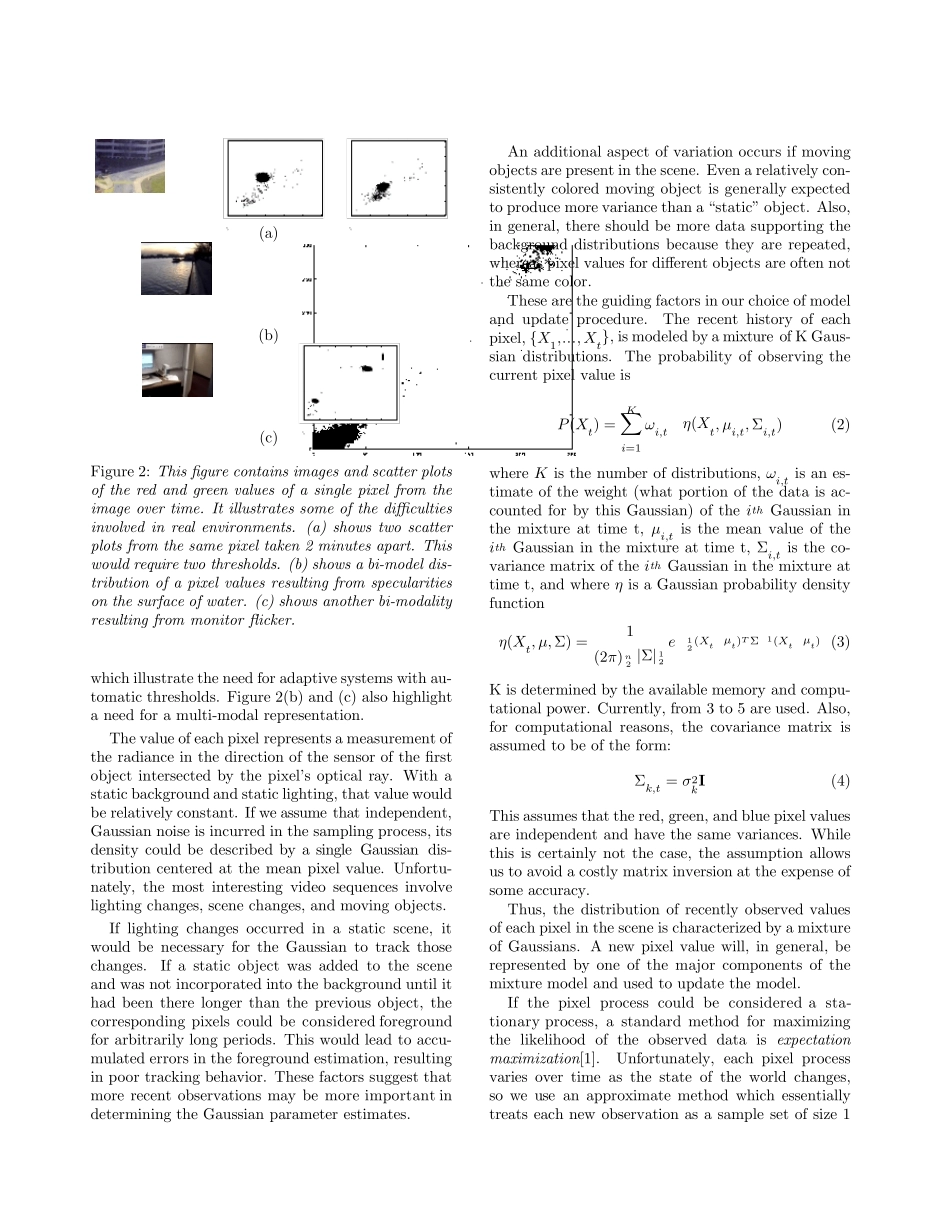Adaptive background mixture models for real-time trackingChris StaufferW.E.L GrimsonThe Artificial Intelligence LaboratoryMassachusetts Institute of TechnologyCambridge,MA 02139AbstractA common method for real-time segmentation ofmoving regions in image sequences involves “back-ground subtraction,” or thresholding the error betweenan estimate of the image without moving objects andthe current image. The numerous approaches to thisproblem differ in the type of background model usedand the procedure used to update the model. This paperdiscusses modeling each pixel as a mixture of Gaus-sians and using an on-line approximation to updatethe model. The Gaussian distributions of the adaptivemixture model are then evaluated to determine whichare most likelytoresult f rom a background process.Each pixel is classified based on whether the Gaussiandistribution which represents it most effectivelyiscon-sidered part of the background model.This results in a stable, real-time outdoor trackerwhich reliablydealswith lighting changes, repetitivemotions from clutter, and long-term scene changes.This system has been run almost continuously for 16months, 24 hours a day, through rain and snow.1IntroductionIn the past, computational barriers have limited thecomplexity of real-time video processing applications.As a consequence, most systems were either too slowto be practical, or succeeded by restricting themselvesto very controlled situations. Recently, faster comput-ers have enabled researchers to consider more complex,robust models for real-time analysis of streaming data.These new methods allow researchers to begin model-ing real world processes under varying conditions.Consider the problem of video surveillance andmonitoring. A robust system should not depen...


